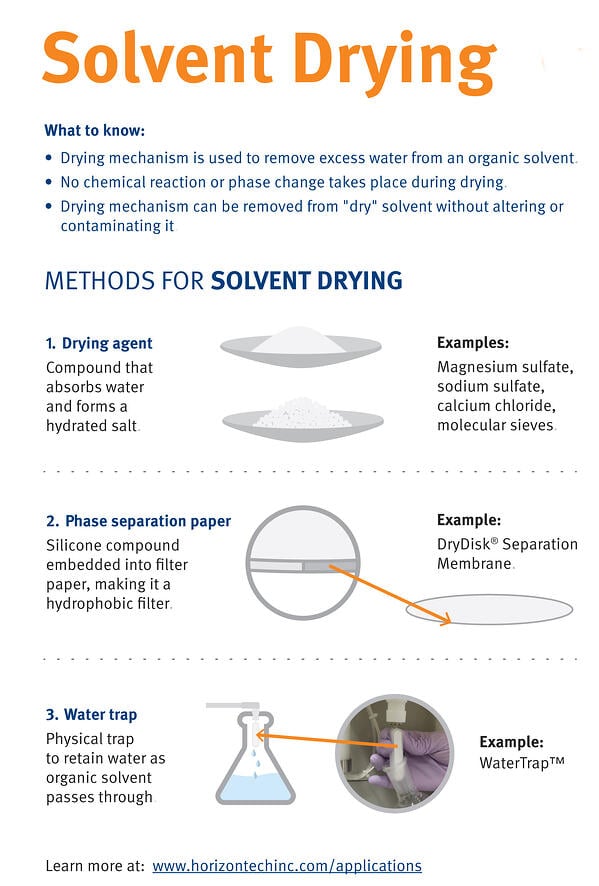Do you ever tire of using sodium sulfate to dry your extracts? I know I do. That is why, whenever I get the chance to avoid using it, I do. The worst experience when using sodium sulfate is when you do not use enough of it, and the sodium sulfate reaches its maximum capacity leading to water breakthrough into your ‘what was supposed to be a dried extract.’ Then, you must dry the extract again with more sodium sulfate.
When you are a high throughput lab, redoing steps is not ideal. Unfortunately, EPA Methods 525.2 and 525.3 require sodium sulfate drying as the drying technique, to name a couple, but not all EPA methods require sodium sulfate for drying. That is why when there is an alternative technique available and you are permitted to use it, why not use it?!
The EPA 8000 series methods refer to 3500 series extraction methods. If you look at extraction method 3510, 3520, or 3535 under EPA Method 3500C it simply says to extract, dry, and concentrate. It does not specify that you must use sodium sulfate. This means that you can dry your extract any way that works best for your lab! Sure, you can still use sodium sulfate, but when you have a choice to avoid it, then I say take it!
We use our solvent phase separation paper, DryDisk®, inconjunction with our manual SDS Solvent Drying System. This product effectively and efficiently separates the water from organic solvents without the need to use sodium sulfate. The water will stay on top of the separation membrane while the solvent goes through and into a collection flask (either a 19/22 taper of a 24/40 taper depending on the system you choose). There is no maximum capacity with using the DryDisk®, so the worry of not using enough sodium sulfate is eliminated. You can also have up to eight SDS Solvent Drying Systems set up using one vacuum pump for ease of sample throughput. (download our infographic)

I know I use the DryDisk® whenever I have the chance to because it is so easy. I simply pour my extract into the SDS Solvent Drying System and let the DryDisk® do the work of separating the water from my extract. It is so easy to get a dried extract that can then move onto the next step in the sample analysis process. Using the DryDisk® is quick, easy, and the mess is much smaller to clean up after use when compared to sodium sulfate. If your EPA Method permits you to choose your drying technique, then think about your options, just make sure all your QC requirements are met by the EPA.
Download our helpful application note on the study of DryDisk Background Contamination.

 Organic Workflow
Organic Workflow Peptide Workflow
Peptide Workflow Scale-Up Flash Purification
Scale-Up Flash Purification  Sample Preparation
Sample Preparation Biomolecule Purification
Biomolecule Purification Oligo synthesis
Oligo synthesis Scavengers and Reagents
Scavengers and Reagents Service & Support
Service & Support Accessories & Spare parts
Accessories & Spare parts Investors
Investors Reports & News
Reports & News The Share
The Share Corporate Governance
Corporate Governance Calendar
Calendar Sustainability
Sustainability Our Offering
Our Offering Our History
Our History Our Locations
Our Locations Leadership
Leadership